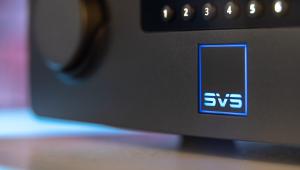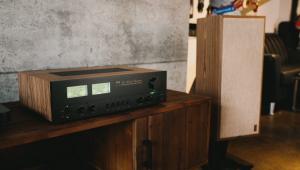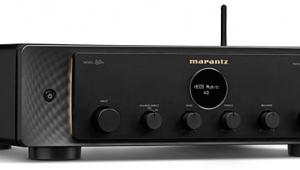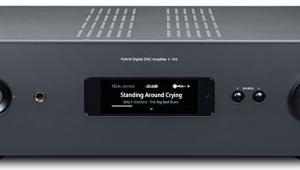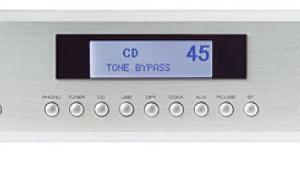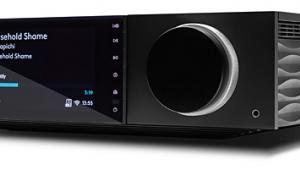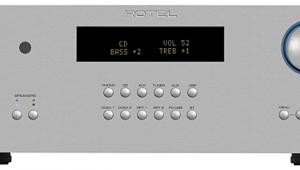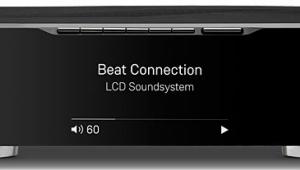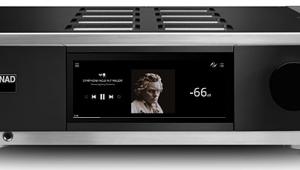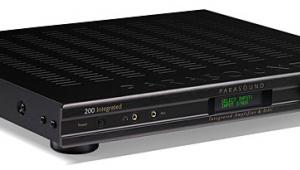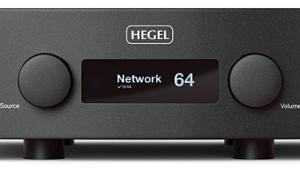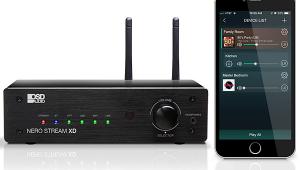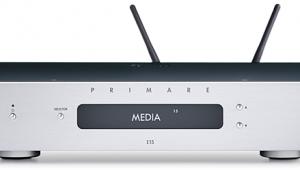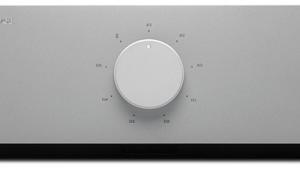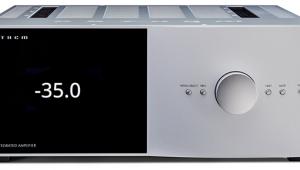Outlaw Audio RR2160MkII Stereo Receiver: Retro Power, Modern Edge
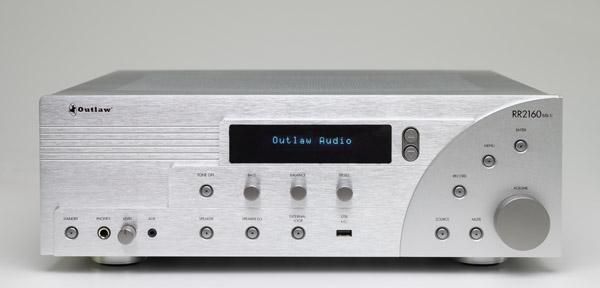
AT A GLANCE
Plus
•Very impressive amplifier has the dynamics and quality for serious sonics
•Free Outlaw Audio app is basic but functional Hi-rez streamer
•Fully two-way bass management/sub output
•Well-engineered Loudness function, plus Speaker EQ option
•Solid onboard phono stage has both moving-magnet and -coil settings
•Lots of inputs and outputs, including pre-out/main-in; 12-volt trigger out, IR in/out
Minus
•Supplied remote control’s ergonomics lacking
•No signal-data display from streaming sources
•No on-board Bluetooth, HDMI, or volume-bypass input
THE VERDICT
A classic, thoughtfully designed stereo receiver updated with Wi-Fi, streaming, and an app, but retaining satisfying power and performance.

Is the stereo receiver still relevant? Outlaw Audio certainly believes so: its newly updated RR2160MkII re-thinks a long-running basic design for the streaming age with onboard Wi-Fi and Ethernet connectivity, a free iOS/Android app, and a (very) modest power update.
First, a little background. Veterans of NAD and Atlantic Technology among others founded Outlaw Audio, formed at the end of the last century, as one of the first consumer-direct audio-hardware brands. By eliminating the distribution and retail channels the firm claimed to claw back the 35 to 45 percent of cost to the consumer that typically went to them, passing it on to the buyer in the form of greater value. (And hey, if Outlaw grabbed a couple points for themselves, can we blame them?) In today’s on-line-dominated world, this seems pretty routine, but back in the day it was a bold step: who would buy audio gear without a showroom in which to see it and a listening room to hear it?
It turned out, quite a few. One of the most popular products offered by “The Outlaws” (as the firm styles themselves) was a simple stereo receiver, the latest iteration of which is our subject here. The RR2160MkII is substantially similar to the original RR2160 we reviewed back in (gulp!) 2017, which was itself derived from an earlier RR2150 model. Even more incredibly, its price has increased a mere $200, to $999, despite the mk ii’s addition of Wi-Fi and Ethernet streaming with a dedicated app to access them, and re-designed volume control and amplifier layouts, the latter of these delivering a very modest power boost of, ahem, 10 watts. On the face of things, the Outlaws’ value standing remains impressive.

Visually, Outlaw’s receiver has not changed at all. It retains the somewhat steam-punk front panel design, said to be inspired by art-deco-era radios, and the same control layout: knobs for volume, tone, and balance; pushbuttons for everything else, most arrayed along the curved sub-panel. A retro, two-line dot-matrix display registers the selected input or radio station (remember those?), and provides readout for the Outlaw’s menu system.
Basic features also retained include four analog inputs, plus a phono input with gain selectable for moving-magnet (MM) or -coil (MC) cartridges, a rare and thoughtful feature in a receiver at any price level. There’s a fixed-level REC(ord) Out jack pair—but does anyone still “tape” anything in our everything-available-at-a-click age? There’s also a separate output/input jack quad marked “External Processor,” which are routed pre-volume-control—basically, what used to be called a “tape loop”—where one might connect a graphic equalizer or other accessory component. (What’s missing is an un-volume-controlled “bypass” input, which would allow the receiver more conveniently to integrate its main left/right channels into a multichannel home-theater layout. Far from a deal-breaker, though.)

Digital inputs comprise two each coax and optical, a USB-B (the pentagonal one) for a computer or outboard streaming source, and two USB-A (the slot-shaped one), one of them sensibly located on the front panel, for “fixed” storage devices, that is, a thumb-drive or bus-powered hard disk. There are also two power-only USB-A slots on the rear panel for charging or powering whatever.
Setup and Listening
With the RR2160ii in place on my equipment rack, I connected my three-way stand-mount monitors to the Outlaw’s nicely heavy, WBT-style “Speakers A” multi-way posts. (The receiver provides a second, identically equipped Speakers B set, selectable by the Speaker button on the front panel or SPK-A/B key on the remote; these step through Speaker A, B, A+B, and OFF.) My trusty tabletop dipole antenna went to the RR2160ii’s coax antenna F-connector, while hardware sources included a multi-disc player, from which I connected both analog-RCA and digital-coaxial outputs, and my long-serving Rega Planar/Ortofon turntable, to the phono inputs set to MM. I also connected my external powered subwoofer for a trial of the Outlaw’s sub-out and bass-management features, which we’ll get to below.
Firing up the receiver, I went first to its Tuner source. The Outlaw receives both analog FM and HD Radio digital-broadcast ones. Scanning the band with my indoor antenna received all the local and semi-local ones I’d expected, with excellent clarity from the stronger analog-FM stations and—of course—perfect clarity from the HD Radio ones. The RR2160ii didn’t do much in the way of “DX-ing” distant stations, but with this antenna, basically equivalent to the wire-dipole provided with the Outlaw and virtually every other receiver, I wouldn’t expect such.

After a bit over a week of casual FM (and some streaming) listening, I settled down to begin the serious auditions. I’ve had experience with the RR2160ii’s predecessors, and with a few Outlaw Audio power amplifiers, so I was not at all surprised to discover that the latest iteration of the firm’s receiver has a surprisingly sturdy power system. Outlaw claims that the new design employs a re-arranged power-amp section with separate circuit boards for each channel and a somewhat heftier power transformer than the original version; these help explain the uptick in power rating from 100 to 110 watts per channel. And unlike a lot of AV receivers, this rating is full-bandwidth, both channels driven, at a specified low distortion level.
In any case, I observed no shortfall in either dynamics or quality relative to my everyday 150 watts-per-channel power amp. The Outlaw had no difficulty driving my small monitors, which are impressively full range for their size, and consequently at least 3 dB less sensitive than typical high-end bookshelf speakers today. This, and their modestly demanding impedance character, mean that an amp must deliver substantial output of both voltage and current—real-world power—to get their best.
This proved equally attainable on dynamic rock as on demanding orchestral stuff. In search of something a bit less dad-rock, I cued up (Qobuz) that reliable demo, Lorde’s “Royals,” a track that makes very substantial low-end demands yet retains dynamic clarity higher up, and close, intimate vocals. No problem: the RR2160ii easily delivered clean sound up to loud-rock levels and well beyond, without any evidence of strain. Spinning a favorite SACD (the two-channel layer) of Mahler’s Fourth Symphony similarly yielded full dynamic range at convincingly concert-Internet levels, plus satisfyingly wide, precise imaging laying out the large orchestra the full width of the stage.
Streaming and More
Most music, for most listeners, most of the time today (including mine) arrives via Internet streaming, whether directly or indirectly. The Outlaw’s options are Bluetooth from your phone (meh), or internet-carriage via your home net’s wireless router, either to the RR2160ii’s onboard Wi-Fi or through a wired Ethernet connection. I first tried the Outlaw’s Wi-Fi, which connected and worked without issue, though the hunt-and-peck marathon to enter network name and password using the linear virtual keyboard on the Outlaw’s tiny display was hilariously 20th-century (there’s no WP2 option, alas). But I employed the wired connection for the bulk of my listening.
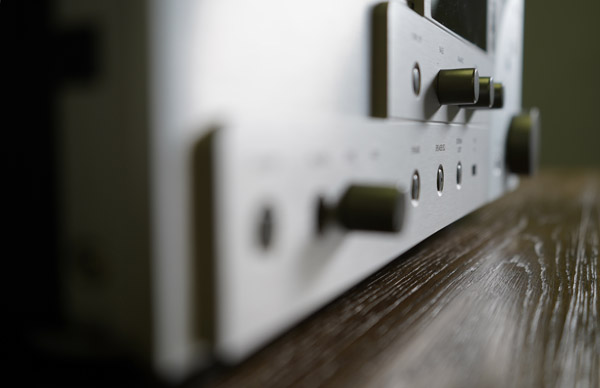
The RR2160ii’s only standalone streaming option is TuneIn internet radio, which you can control through the unit’s Menu system via either front panel or remote control: perfectly doable, but a bit cumbersome. A much better option is to use the simply named Outlaw Audio app, which furthermore is needed to stream anything else, as is of course a smartphone (in my case, my ain’t-broke/don’t-fix iPhone XS) or tablet.
The app provides a much friendlier interface to the TuneIn ‘net-radio system, and direct access to most of the usual streaming suspects—Spotify, Tidal, Napster, Qobuz, Amazon Music, and a couple more. Once signed into Qobuz I had no difficulty navigating or finding content, and response was fairly snappy. Sound quality was expectedly excellent, but note that you have to open the service’s “Streaming” setting from within the Outlaw app’s sidebar menu to select your format—in my case, “HiRes—24 bits/up to 192 kHz.” The RR2160ii reproduces hi-rez audio, up to this level, from USB streaming sources or drives. The front-panel display scrolls track data, which is nice but not particularly readable from more than about six feet. But in neither case does it show the currently playing signal format, which would be reassuring for those of us courageous enough to admit how difficult it is to distinguish well-reproduced CD-quality from hi-rez streams.
The Outlaw Audio app has only a few rather lukewarm reviews on Apple’s store, but I found it perfectly fine: stripped-down, perhaps, but generally simple, glitch-free, and reliable. It’s essentially a three-pane layout, so you never have to swipe more than twice. That said, like all too many similar apps, volume control is persistently displayed on every single page, which is always a mistake in my book; I hate having to swipe or tap to another page simply to adjust the volume.
For further taste of high-resolution audio, I connected the Outlaw receiver’s rear-panel USB-B “PC USB” input to my studio’s iMac via a long USB cable and streamed a selection encompassing FLAC, WAV, AIFF, and DSD files using the free PINE player. All of these played without impediment, presumably via PINE’s PCM packeting, and sounded excellent. A file of a beautiful performance of Bach’s First Solo Cello Suite—its recording-label source, and cellist long since lost to the chaos of undisciplined file storage—sounded simply electrifying, reminding me what HiFi at its best is all about. As mentioned, there’s no readout of file type or format when playing from an external USB streaming source—not really a problem, since the source will (obviously) provide this. According to Outlaw’s manual this info, plus scrolling track/artist data, is displayed for a bus-powered USB device jacked into the receiver’s front or rear USB-A ports. But the receiver would not load any of my Mac-formatted drives.
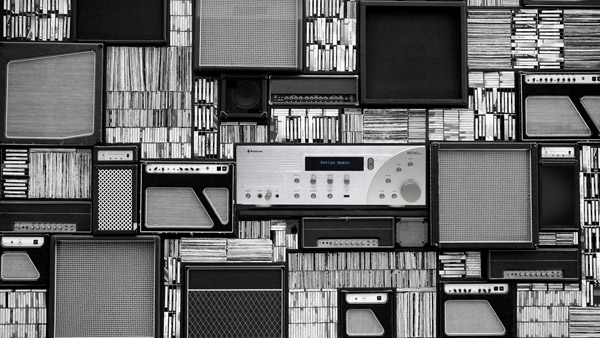
The Odds & the Ends
I hooked up my long-serving Rega/Ortofon turntable and spun a few LPs—though in everyday life I’ve long since abandoned the format for others capable of something better than 65 dB dynamic range—with the RR2160II’s phono input set to “MM.” I heard nothing that would discourage me from serious vinyl listening, were I a vinyl guy: musical depth and nuance, along with every tick and pop, were properly reproduced.
The Outlaw receiver’s subwoofer output is served by onboard bass management—a two-way low/high-pass filter that’s accomplished entirely in the analog domain, as there’s no onboard A-to-D conversion. This is user-settable, via rear-panel slide-switch, to 60, 80, or 100 Hz, or BP for Bypass, meaning no filtering, for when no subwoofer is used or you choose to use the crossover facilities of the sub. I tried this with my sub-compact but 20 Hz-capable powered sub, using its unfiltered (no crossover) LFE input, and found it worked as expected, adding another octave of range to my system, though with the expected challenges of subwoofer/satellite/room integration. The RR2160II’s filter is a 12 dB/octave circuit, similar in slope to the digitally implemented crossovers found on most AV receivers, though some higher-end examples offer steeper options.
The main point is that the fully two-way bass management means that, with a sub connected, the main stereo speakers are no longer tasked with reproducing deep bass, for a substantial reduction of demands on the receiver’s amplifier. In practice, this yielded another 10 dB or so of clean level on tap—way more than I’d ever require IRL. Bottom line, in a system with a suitable powered sub, the RR2160II should have ample watts on tap for any but truly low-sensitivity speakers, enormous rooms, dedicated head-bangers, or some combination thereof.
The remote control supplied with the Outlaw receiver is obviously a branded pre-roll (from, I think, Universal). This is full-function, key-lit, and perfectly okay, but its ergonomics are poor. The burying of the volume up/down keys in a cluster of a dozen identically sized and shaped keys is particularly laughable.
The RR2160II proved to run comfortably warm when idling or played casually, and quite warm indeed when driven closer to its full potential. So locate accordingly, with a flat, smooth shelf below and plenty of free space above.
Outlaw includes a Loudness option in the RR2160II’s controls, though it’s only selectable via a trip into the receiver’s menus. Unlike nearly all such controls back in the day, this is linked to the volume control, with its action becoming progressively less pronounced as the knob (or remote) is turned up. This makes it a far more useful feature since it compensates for our hearing’s decreased sensitivity to (mostly) bass at reduced loudness (hence the name) over a wide range of volumes, and it works very well. (Viz: the Apt/Holman preamp, circa 1979, which I’d wager is where Outlaw got its inspiration….)

Speaking of volume controls, in this latest edition of its receiver, Outlaw has changed to a “logarithmic-taper” control. This gives lots of adjustability over the first third to half of the knob’s rotation, encouraging precise volume selection, though surprising the uninitiated with the need to twist the knob considerably more than expected to get to “loud.” This contrasts with traditional, linear receiver volume controls, which typically were linear, and calibrated to get loud, fast, giving the unwary shopper the impression, “Whoa—this thing must be really powerful!), but which in typical systems reached clipping by around the mid-point of the control’s range, leaving the other half unused. (Same origin story as above? Probably.)
There’s also a Speaker EQ feature, accessible from the front panel or remote. This allows you to select a low-frequency boost of 6 dB—substantial, but not overpowering—below 55, 65, or 80 Hz, by stepping through these options. (The curve is not specified, but I’m guessing it’s 12 dB/octave.) The idea is to eke out a bit more deep bass from smaller speakers, which this certainly will do, given suitable volume restraint. But users should exercise due caution: those 6 dB aren’t “free.” Enabling this feature will reduce the system’s overall clean level potential a bit and, if applied injudiciously at high volume settings, could even imperil woofers.
Bluetooth: the RR2160II doesn’t have any onboard, a rather notable absence in today’s world. If needed, you can buy a perfectly adequate BT dongle for under 20 clams. And as for an HDMI input for hooking up your TV, the Outlaw doesn’t have this, either. Ditto above, but Outlaw is perfectly frank about the reason: dollars and cents. HDMI licensing is not free, and in an audio-only receiver, other than convenience, an HDMI input adds no useful function beyond that already offered by the RR2160II’s optical-digital input, a format found on virtually all modern TVs.
This kind of honesty is refreshing, much like the Outlaws’ latest receiver. Clearly, the RR2160MkII will not appeal to everyone, nor, I suspect, is it intended to. Instead, the Outlaw design offers real audio quality, substantial real-world power, basic streaming, and minimal complication, in a usable package dusted with thoughtful features. And that combination will surely appeal to some of us—enough to join the Outlaws.
SPECS
Power Output: 110 watts/channel (8Ω, 20 Hz-20 kHz, both ch. driven, at <0.05% THD; 165 W per channel at 4Ω)
Digital audio inputs: 2 coax, 2 optical SPDIF, 2 USB-A (for storage device, 1 front panel), 1 USB-B (streaming), Ethernet
Analog inputs: 1 phono MM/MC selectable, 4 line-level unbal (RCA), External Processor loop input
Audio outputs: stereo pre-out/main-in (RCA, linked), fixed-stereo REC out, External Processor loop output, 2x (A/B) stereo speaker outputs on multi-way binding posts, headphone (1/4-in. stereo unbal, front panel)
Network: onboard Wi-Fi, wired Ethernet
DAC: 24-bit/192 kHz-capable
Additional: 2x USB-A (charge-only); 2x 12v trigger out; IR in/out
Dimensions: (WxHxD, Inches): 17.1 x 35.75 x 15 in., 28.3 lb.

